Few things feel as quintessentially celebratory as sparkling wine. From the pop of the cork to the bubbles dancing in the glass, sparkling wine is an event all on its own. Italy is known for a range of sparkling wines, but the treasured gem is Franciacorta. Part of what sets Franciacorta apart is the production method—unlike Prosecco and Asti Spumante, Franciacorta is made using metodo classico, a labor of love based off that of Champagne. While this area in Lombardy had been producing wine for centuries, it was only in the 1960’s when Guido Berlucchi and Franco Ziliani decided to change the region forever by bringing metodo classico to Italy and creating the first Franciacorta.
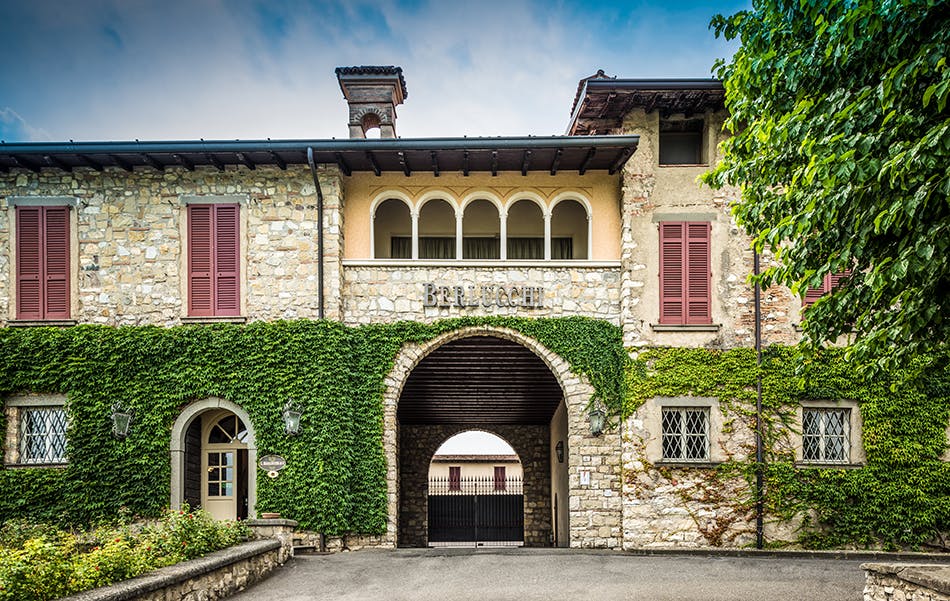
“What if…” & the History of Berlucchi
Built in the 16th century by the Lana de’ Terzi family, Palazzo Lana Berlucchi inspires greatness. With marble fireplaces and vaulting architecture, it’s no surprise that such a location would be the start of a wine so spectacular. In 1958, young winemaker Franco Ziliani approached Count Guido Berlucchi, descendant of the Lana de’ Terzi family, in the caminadù room and asked the pivotal question: “What is we made a sparkling wine the way the French do?”
Once Franco Ziliani proposed this idea to Guido Berlucchi, the challenge began. After a few years, the production of 1961 yielded three thousand bottles of the first Franciacorta. Once opened the following year, the wines proved to be excellent, and the trio never looked back.
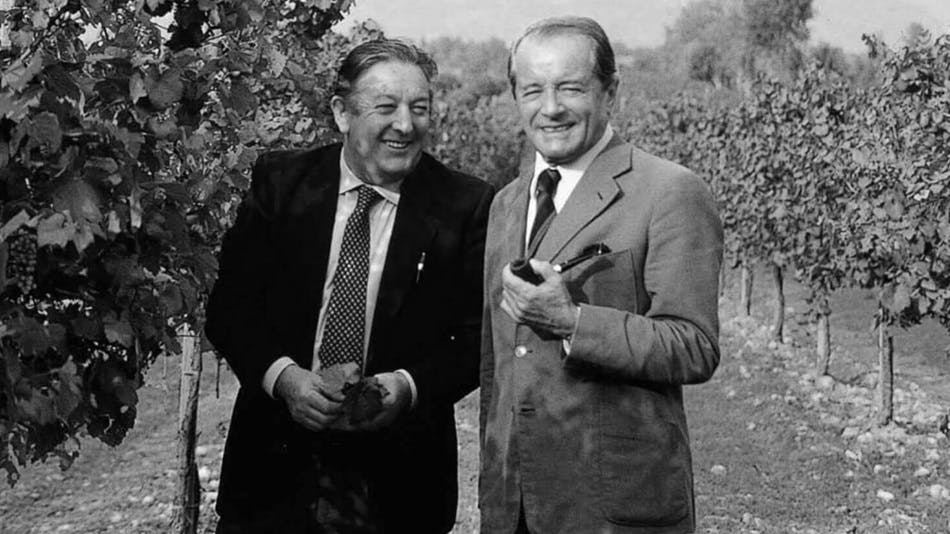
Franciacorta today is prized as one of the top areas in the world for classic method sparkling wines. Countless producers have followed in Berlucchi’s footsteps to strengthen the region’s presence, even gaining the region DOCG status. The estate remains the benchmark for the entire region, known for its exceptional quality, pioneering innovations, and significant contribution to overall production.
Franco Ziliani was succeeded in running Berlucchi by his three children: Cristina, Arturo, and Paolo. They have expanded the original brand with three new lines: Berlucchi ’61, Berlucchi ’61 Nature, and Palazzo Lana Riserva. To preserve this historic land, the company has also taken strides towards total sustainability, achieving organic certification within the vineyards in 2016. They choose to have lower volume but higher quality yields from their vineyards to produce only the best sparkling wine.
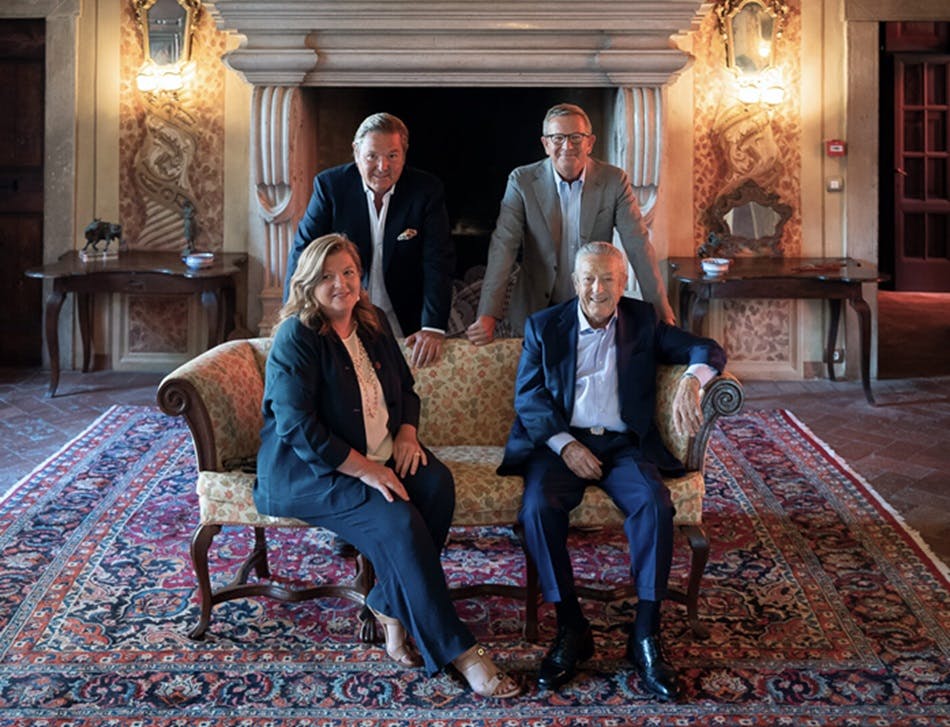
Metodo Classico: Franciacorta Wine Production
Chardonnay and Pinot Nero (Noir) are carefully and sustainability cultivated in the Berlucchi vineyards. The grapes are hand-harvested and transported in small crates to prevent as much damage as possible. Once in the winery, the grapes are divided by variety, vineyard, and ripening aspects. They are then loaded into special presses that gently and gradually apply pressure to create four different fractions of must, each with different characteristics. The musts are clarified then transferred into stainless steel vats or oak barrels before cold fermenting into the base wine.
Just like a conductor blending an orchestra, the winemakers mix different wines and vintages to create the perfect cuvée, or base blend. Over 150 cuvées are assembled to find the future Franciacorta. The selected cuvée is then blended with sugar and additional yeast before being transferred into bottles. These bottles are closed with a crown cap, and secondary fermentation begins. With this crown cap in place, the carbon dioxide created from fermentation is trapped and dissolved into the wine, making the picture-perfect bubbles Franciacorta is known for.
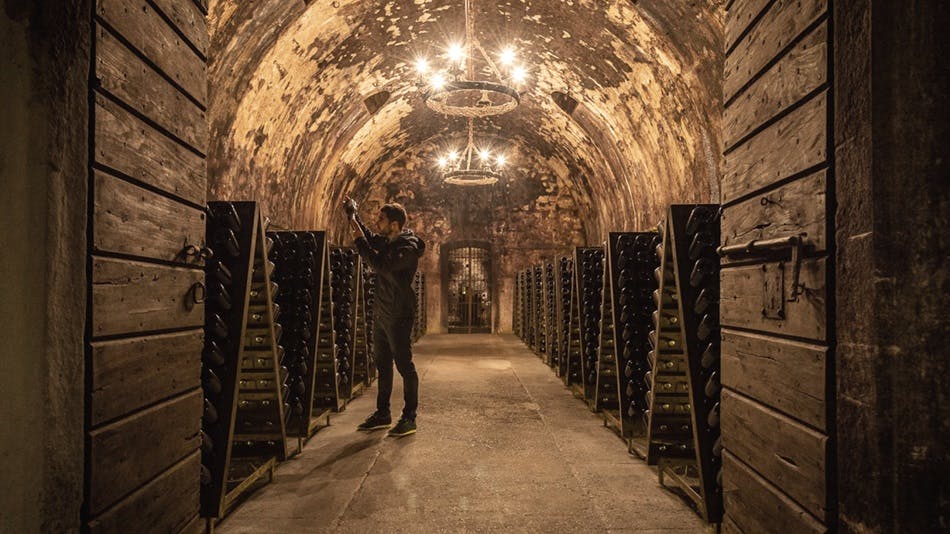
Once the secondary fermentation has finished, the aging process begins. In the historic, temperature-controlled cellar, these wines rest for at least 18 months with the lees, lending the wines their signature bready aromas. The most prestigious Berlucchi wines will age for up to ten years in these cellars, patiently waiting for their moment to arrive.
After aging, the wines are riddled, a process that gradually inverts the bottles and gently moves the yeast residues into the crown cap. The necks of the bottles are then frozen, trapping the yeast, and uncapped. Since a small amount of wine is released with this process, extra wine, and possibly sugar in the form of dosage, is added back in to decide the final style. The signature mushroom-shaped cork, crown, collar, and label are all applied to the bottle. The wines are laid down for another three months to a year before they are ready to be popped.
When deciding which Franciacorta to enjoy, it’s key to read the label. Some of the terms will be in French because of the influence of Champagne and the traditional method. Pas dosé, nature, and zero dosage all mean the wine is the driest available with less than 3 grams of sugar per liter. Next along the sweetness scale are extra brut, with 3-6 grams per liter, and brut, with 6-12 grams per liter. Extra dry will start to have sweetness, with 12-17 grams per liter. Sec, secco, or dry will have 17-32 grams per liter, and the sweetest of all, demi-sec or abboccato, will have 33-50 grams per liter.
Another important term exclusively used for Franciacorta wines is Satèn. A brut wine with a characteristically low pressure level, this lightly effervescent, silky wine is a blanc de blanc with delicate bubbles. Riserva wines have been aged on the lees for at least 5 years. Millesimato, or “vintage,” wines are made from the same high-quality year.
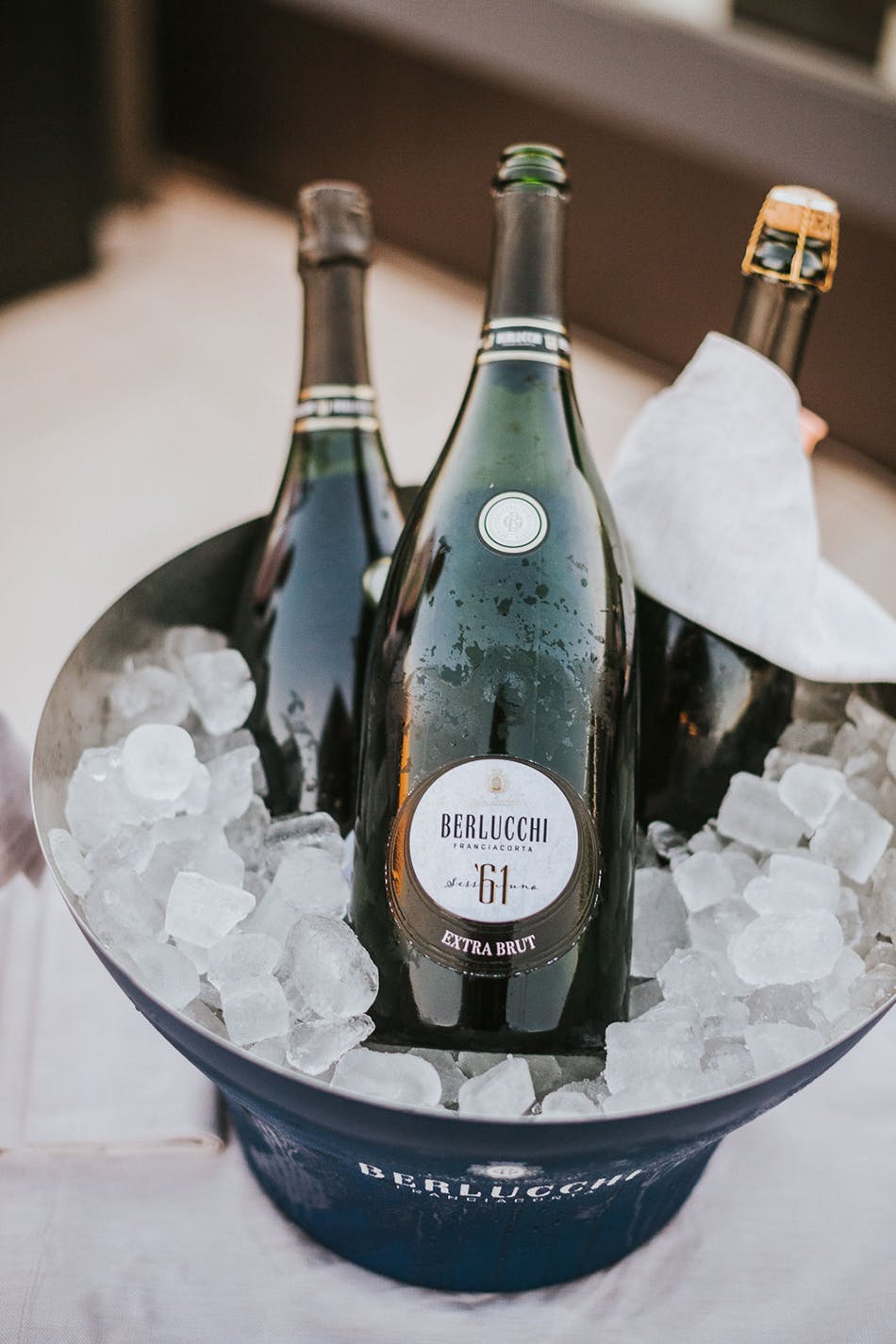
Berlucchi Franciacorta
Berlucchi has divided their Franciacorta into four lines: Cuvée Imperiale, Berlucchi ’61, Berlucchi ’61 Nature, and Palazzo Lana. Named the “life and soul of the party,” Berlucchi Cuvée Imperiale is the first ever Franciacorta, the wine that started it all. Its versatility makes it an excellent choice for any celebration or meal—enjoyed it as an aperitif, with dinner, or any toast to life.
Berlucchi ’61 was created to evoke the easygoing mood of the 1960’s. This line is ideal for those who love that little something extra paired with lightness and laughter. Berlucchi '61 Extra Brut is 85% Chardonnay and 15% Pinot Nero with less than 6 g/l dosage and notes of citrus fruit and a crisp, clean finish. Contrary to its lighthearted sibling, Berlucchi ’61 Nature expresses the pure and elegant sophistication of Franciacorta. With zero dosage and aged for at least 5 years, it is the strongest expression of the terroir. Berlucchi Palazzo Lana, just like the glittering estate, is the jewel of Berlucchi’s wines. It is only produced from great vintages and aged on the lees for at least nine years.
No matter what mood, Berlucchi Franciacorta is the perfect way to add a pop of celebration. Excited to try one of Berlucchi’s sparkling wines? Shop at your local Eataly or online at Eataly Vino to bring home a bottle today!
